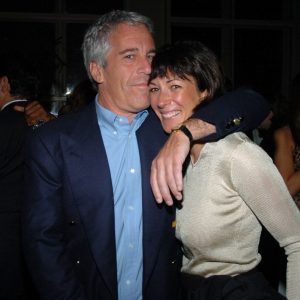If you ever find yourself traveling through the stunning landscapes of Sedona, Arizona, you might notice a curious sight amid the natural beauty: a McDonald’s that looks remarkably different from what you’d expect. Instead of the iconic golden arches that symbolize the fast-food chain across the globe, this particular McDonald’s boasts arches painted in a bright, turquoise blue. To the casual observer, it might seem like a whimsical design choice, but the story behind these unusual arches runs far deeper, intertwining local culture, city planning, and environmental consciousness. Sedona’s turquoise McDonald’s has not only become a unique local landmark but also a symbol of how a global brand can adapt creatively to its surroundings while respecting the distinct character of a community.
The unusual color choice did not arise from a marketing gimmick or a whimsy from corporate designers; it was born out of necessity. Sedona is world-renowned for its dramatic red rock formations, a landscape of such vivid, natural beauty that the city has long enforced strict architectural and aesthetic guidelines to protect it. Every new building, signage, and modification in the city is subject to review to ensure it harmonizes with the surrounding environment. These regulations aim to preserve the striking vistas that draw millions of tourists annually, safeguarding Sedona’s unique identity from being overshadowed by visual pollution or discordant development. When McDonald’s first announced its intention to open a branch in Sedona in 1993, city officials raised immediate concerns that the brand’s trademark golden arches would clash starkly with the warm red tones of the surrounding rock formations. The challenge was clear: how could an international corporation maintain its recognizable identity while respecting the natural and aesthetic rules of a small city with a powerful sense of place?
After lengthy discussions and negotiations, city officials and McDonald’s executives reached a compromise that would ultimately create something remarkable. Rather than insisting on the familiar gold arches, McDonald’s agreed to adapt to the city’s vision, and the arches were painted turquoise. This decision was strategic: turquoise offered a pleasing contrast to the reds and oranges of Sedona’s landscape while remaining visually striking enough to be instantly recognizable. Turquoise has a long history in Southwestern art and culture, often seen in jewelry, pottery, and architectural accents, which added an additional layer of regional resonance to the decision. The compromise demonstrated a willingness by both parties to find common ground—a way to maintain corporate branding while respecting the environmental and cultural context of the location. What could have been a mundane design adjustment instead became a distinctive feature, a conversation starter, and a rare example of brand adaptability in practice.
The outcome of this decision turned out to be unexpectedly beneficial for both the city and McDonald’s. Far from detracting from Sedona’s natural beauty, the turquoise arches quickly became a point of fascination. Tourists visiting the area to admire the red rock formations often find themselves drawn to the restaurant, eager to photograph the unusual arches as part of their travel experience. Local residents, too, have embraced the uniqueness of the building, often referencing it as a quirky landmark that sets Sedona apart from other towns. The turquoise McDonald’s demonstrates how thoughtful design decisions can harmonize with the environment, creating a structure that is both functional and visually complementary to its surroundings. It also highlights how a brand can gain unexpected positive attention and cultural significance when it shows sensitivity to local values and aesthetics.
Beyond its role as a tourist attraction, the Sedona McDonald’s represents a broader lesson in compromise, creativity, and environmental stewardship. The decision to forego the traditional gold arches illustrates that even global corporations can adapt to local needs without sacrificing their identity or commercial viability. By embracing the city’s aesthetic rules, McDonald’s showed respect for Sedona’s community standards, signaling that profitability and sustainability do not have to be mutually exclusive. The turquoise arches became more than a marketing feature; they stand as a testament to the power of collaboration between corporate interests and community values. In a world often dominated by homogenized branding and urban development, Sedona’s example shows how intentional design choices can celebrate local character while still maintaining global recognition.
Over time, the McDonald’s in Sedona has become a cultural touchstone, a small but meaningful example of how adaptation can lead to creativity and innovation. It serves as a reminder that local landscapes and communities hold power, and that mindful adherence to aesthetic and environmental principles can yield unexpected rewards. Tourists often remark on the arches with curiosity and amusement, snapping photographs that end up shared widely, inadvertently promoting both the city and the restaurant in a way that traditional advertising rarely achieves. The turquoise arches have turned a simple fast-food outlet into an iconic representation of the town itself, symbolizing a blending of corporate branding with natural beauty that few other places in the world can claim. Its story encourages designers, city planners, and businesses alike to consider context, heritage, and harmony in their approach to development and branding.
In conclusion, the turquoise McDonald’s arches in Sedona, Arizona, stand as a striking example of how a global brand can successfully coexist with a community’s distinctive environmental and cultural identity. What began as a necessity—altering a world-famous logo to comply with local aesthetic guidelines—transformed into a defining feature that attracts tourists, delights residents, and communicates the importance of balance between corporate presence and natural beauty. Sedona’s unusual McDonald’s demonstrates that compromise and creativity can produce results that are both visually pleasing and culturally meaningful. More than just a fast-food restaurant, it has become a symbol of adaptation, respect for the environment, and the positive outcomes that can emerge when global corporations work in harmony with local values. For visitors and residents alike, the turquoise arches are a colorful reminder that preserving natural beauty and honoring community standards can result in something truly extraordinary, blending iconic branding with the timeless wonder of Sedona’s red rocks.





